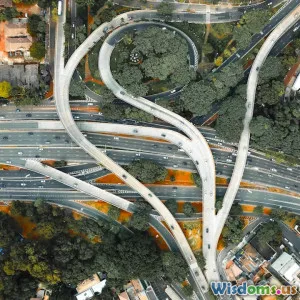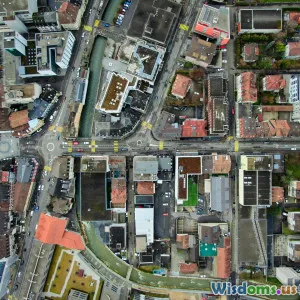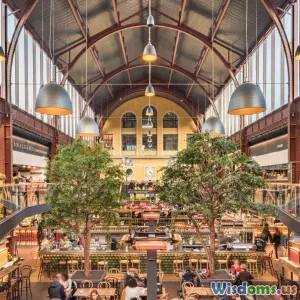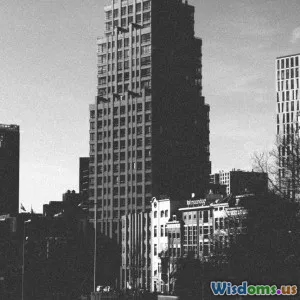
Integrating Technology in City Planning
8 min read Explore how technology is revolutionizing city planning, shaping smarter, more sustainable urban futures with data-driven design and innovation. (0 Reviews)
Integrating Technology in City Planning: Paving the Way for Smarter, Sustainable Cities
In an age dominated by rapid urbanization and technological progress, cities around the world are grappling with unprecedented challenges. Traffic congestion, resource management, housing shortages, and environmental concerns demand innovative solutions. Enter technology: once just a supporting tool, it has now become a central force transforming city planning and urban design. But what does it truly mean to integrate technology in city planning, and how can it be harnessed effectively to build smarter, more sustainable cities?
The Digital Revolution in Urban Planning
Technology reshapes city planning by providing unprecedented tools for data collection, analysis, and simulation. Traditional urban planning relied heavily on static maps and manual surveys, often limited by the slow pace of data gathering and change implementation. Today, digital technologies inject momentum into this process.
Digital Twins are among the most promising innovations. These are real-time, virtual models of cities that simulate everything from traffic flow to energy consumption. For example, Singapore’s Virtual Singapore project uses a 3D city model to simulate urban phenomena, enabling planners to visualize impacts of new developments or emergency scenarios before making decisions. This not only reduces risk but fosters evidence-based policies.
Harnessing Big Data and IoT for Real-Time Insights
Big data and the Internet of Things (IoT) serve as the backbone of smart city frameworks. Sensors embedded in roads, buildings, and public infrastructure feed continuous data streams into centralized platforms, allowing planners to monitor and respond dynamically.
Take Barcelona, for example, where interconnected sensors monitor street lighting, water usage, and pollution levels. This granular data helps the city tune energy consumption patterns, cut waste, and optimize public services. According to the City of Barcelona’s reports, such initiatives contributed to energy savings of approximately 30% and better urban air quality.
City planners can now detect patterns of pedestrian movement or traffic congestion in real-time and adjust signals or transportation schedules accordingly — an impossible feat without technology.
Artificial Intelligence and Machine Learning: Decision-Makers’ New Allies
AI and machine learning algorithms have transformed how planners approach problems. These tools mine complex datasets, predict trends, and suggest design alternatives that humans might overlook.
Chicago’s Office of Innovation employs AI algorithms to predict areas prone to flooding based on weather patterns and land use. This predictive capability enables proactive infrastructure adjustments, minimizing damage and enhancing city resilience.
Similarly, AI-driven models aid in optimizing land use for housing, commercial spaces, and recreational zones, ensuring efficient spatial allocation while accommodating demographic growth.
Enhancing Citizen Engagement through Technology
Effective city planning isn’t solely an expert endeavor—it also thrives on public participation. Technology offers new, inclusive channels for citizen involvement.
Applications and online platforms allow residents to visualize proposed urban changes and provide feedback instantly. For instance, Helsinki uses a digital participatory tool called CityFeedback that gathers ideas and concerns directly from inhabitants, ensuring plans reflect community needs and values.
This two-way communication cultivates transparency and trust, making the planning process democratic and responsive while mitigating conflicts before they escalate.
Technology’s Role in Sustainability and Climate Resilience
Sustainability is a core goal for 21st-century urban designers. Technology acts as a catalyst in this arena by enabling cities to optimize resource use and reduce carbon footprints.
Smart grids, powered by AI, dynamically distribute electricity based on demand and generation, often integrating renewable sources like solar and wind. Cities such as Amsterdam have piloted smart energy solutions that led to substantial reductions in greenhouse gas emissions.
Moreover, tools like Geographic Information Systems (GIS) combined with climate modeling allow planners to assess vulnerability zones prone to heatwaves, flooding, or other climate risks, guiding resilient infrastructure development.
Challenges and Ethical Considerations
While technology offers powerful advantages, it is not without pitfalls. Data privacy emerges as a significant concern: constant monitoring can encroach on individual rights if safeguards are lax. Cities must adopt robust governance frameworks ensuring data security and ethical data use.
Additionally, technological disparity can exacerbate inequalities—the so-called digital divide means not all citizens benefit equally. Thoughtful policies should aim to bridge such gaps, ensuring inclusivity in access to smart services.
Conclusion: Building the Cities of Tomorrow
Integrating technology into city planning is no longer optional; it's imperative for shaping livable, efficient, and resilient urban environments. By leveraging digital twins for scenario testing, harnessing big data and IoT for real-time responsiveness, deploying AI for smarter decisions, and engaging citizens through interactive platforms, planners can design cities that better serve their inhabitants.
Public-private partnerships and cross-disciplinary collaboration will further accelerate progress. Yet, it is vital to balance innovation with ethical standards and inclusivity to ensure technology empowers all residents.
The metropolis of the future is one where technology harmonizes with human-centric design, where cities dynamically adapt, and sustainability goes hand in hand with growth. Through thoughtful integration of technological tools, urban planners can rewrite the story of city living—turning challenges into opportunities, and dreams into tangible realities.
References:
- City of Barcelona Smart City Overview: https://www.barcelona.cat/en/
- Virtual Singapore Project: https://www.nrf.gov.sg/programmes/virtual-singapore
- Chicago's Flood Prediction AI: Chicago Office of Innovation, 2021 Report
- Helsinki CityFeedback Platform: https://www.hel.fi/helsinki/en
- Amsterdam Smart Grid Projects: European Smart Cities publications
This article provides a practical compass for architects, urban planners, policy makers, and citizens eager to understand the transformative impact of technology in city planning today.
Rate the Post
User Reviews
Popular Posts





















